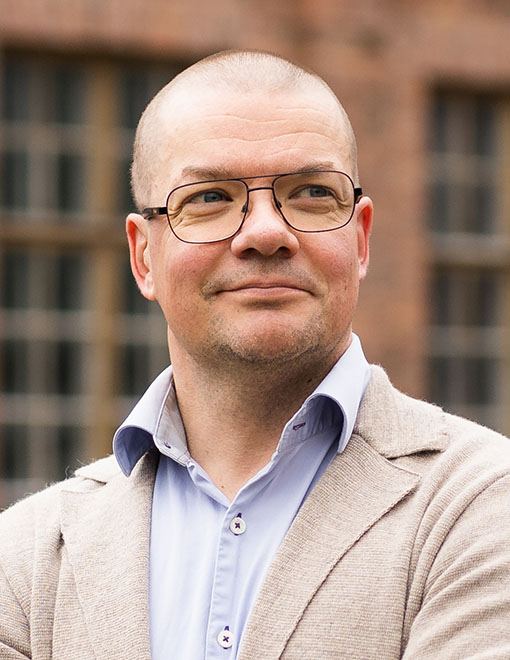02/06/2023
The next industrial revolution has started already – now we need collaboration and open-mindedness
Lately, I have been wondering whether we are already at the start of the next industrial revolution as we move increasingly rapidly from linear industrial activities towards a circular economy-based model. According to this model, raw materials, byproducts and waste are utilized more and more comprehensively. It is clearly discernible that competence needs, for example, are undergoing change.
Traditionally, the value chain of the circular economy has been visualized by means of the waste hierarchy. According to this model, efforts should be focused primarily on preventing waste and using materials more efficiently.
After this, products should first be recycled as they are, and if this is not possible, they should be used as components or raw materials. If even recycling is not possible, the waste fractions should be used for energy production as far as possible.
New model already evolving
As an extension to the traditional model, a new step is evolving in which the carbon dioxide emissions generated during incineration are recovered and used together with hydrogen and green electricity to produce synthetic fuels and raw materials, for example. Carbon dioxide can also be used as a concrete hardener by binding the carbon to the concrete.
This trend will help us break away from our dependency on having hydrocarbon compounds act as the energy carrier. In the future, carbon will circulate as different raw materials, and the energy we use will come increasingly from outside this cycle, from renewable energy sources.
Biomass to play a big role in this transition
In addition to the above, biomass will be increasingly used in the future to bind carbon dioxide. This forces us to contemplate how we operate in the land use sector and how we manage and maintain forest biomass.
In case this sounds easy, it should be noted that land use is closely connected to the loss of biodiversity. On the other hand, bioeconomy solutions and innovations can be used to produce materials from natural fibers to replace plastics, for example.
This in turn means increased competition for natural fibers, so it will be necessary to decide where to source them or how best to use them. Accordingly, forest, regional and energy policies must be formulated together in order to find the best solutions.
Solutions must be sought holistically
As can be seen, it is no longer sufficient to focus on solving individual problems; instead, issues must be examined on a broader scale. It is important to understand what kind of measures achieve the best impact and, on the other hand, how to prioritize raw materials and resources for hard-to-replace products.
For example, wood fiber and its components, such as cellulose, hemicellulose and lignin, should ideally be used for products with the maximum added value instead of for energy production or low added-value solutions.
Similarly, the rapidly increasing output of green electricity should be used for high value-added products, such as ammonia, methanol and methane, instead of using it to produce hydrogen for the needs of Central Europe. It could also be questioned whether biogas should be reserved solely for road transport and industry, where replacing fossil fuels with electricity is challenging.
How to search for solution models in practice?
Finding solutions will require first and foremost wise political decisions, both locally and globally. In addition, we will need to do a lot on the practical level.
Encouraging examples have been provided by numerous industrial startups who have an open-minded approach to developing the future. These new challengers can also be important “sparring partners” for traditional operators, who have to develop their own, already large-scale operations.
Collaboration will be required at all levels to achieve progress. It is particularly important that solutions are sought in the most interdisciplinary way possible. Research institutes, industrial companies, designers and experts, not to mention technology developers and suppliers, should all be involved.
Competence needs are also evolving
Similarly, it is essential to acknowledge the increasing competence needs for chemical and process expertise in particular, because in a world that utilizes the circular economy, raw materials are increasingly non-homogeneous. As a consequence, production processes are also becoming increasingly challenging.
The increasing share of electricity in energy production and use is creating new needs for electrotechnical know-how. The spread of digitalization to different fields of activity in turn is creating new opportunities for solving future challenges (the EU, for example, has emphasized the importance of the twin transition), but at the same time it is important to ensure that we have sufficient expertise that combines sustainability and the needs of the data economy.
No one can succeed in the future without partners
The fourth area of expertise that I think is important is holistic management and the ability to combine existing technology solutions. It has been said that we already have all the necessary solutions we need; in the future, we simply need to know how to combine these in the best possible way.
Based on the above, I really believe that we are now at the dawn of a major industrial and production revolution. This time around, the role of the steam engine is being played by the electrolyzer and that of the spinning jenny by the bioreactor.
It is great to be a part of this revolution. I strongly believe that, by working together, we can solve even the most challenging problems.

